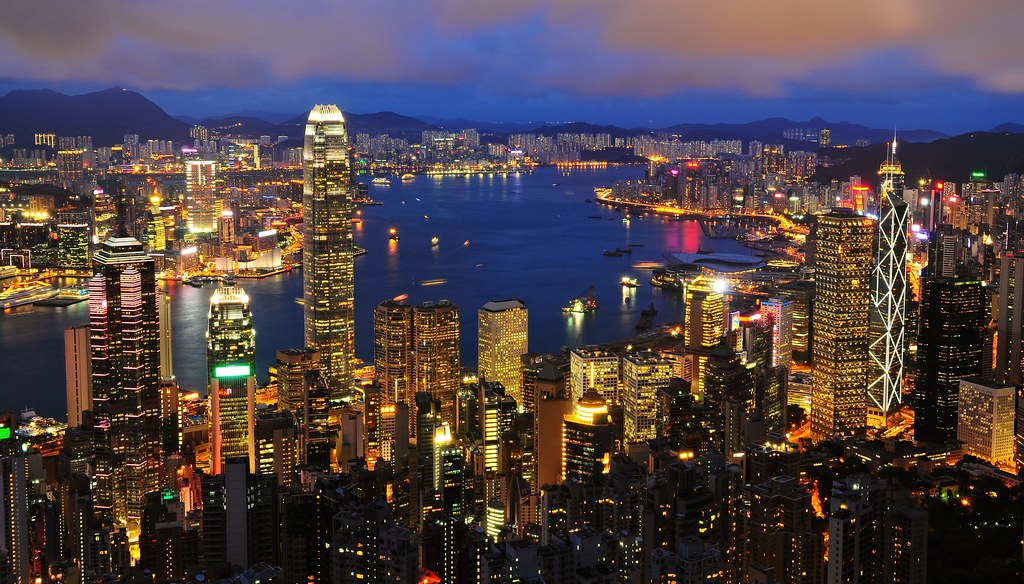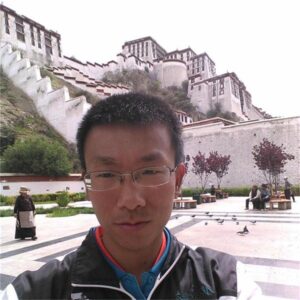Developing modern urban features of night landscape
One of the hallmarks of modern urban life is the prolonged nightlife. This allows people to have more time to observe and experience the city at night. Therefore, it is more and more necessary to develop urban nightscapes to beautify people’s lives, nurture people’s aesthetic sentiment, and improve people’s quality of life.
People who have been to an international city have a common feeling that the night in the city shows a completely different scenery from the daytime under the colorful artificial lighting, and it is even more beautiful than the daytime. For example, at night in Hong Kong, as the night falls, it is no longer an endless darkness, nor a little spark, but a city that never sleeps. It is full of warm and attractive lights, which can make people get rid of the squeezing and sultry feeling from the hard cement and large glass curtain walls widely used in modern buildings during the day. Looking at the beautiful nights on both sides of Victoria Harbour and the splendid lighting landscape of the buildings, it is often unforgettable.
In the 1990s, the night landscape of the city received more and more attention at home and abroad. The US cities of Detroit and Baltimore are developing and implementing five-year plans for the re-planning and large-scale transformation of the city’s nightscapes, while Atlanta’s store owners are being asked to assist the municipality in making the city a bright, cosmopolitan city. People who have visited Hong Kong and Shanghai have been impressed by the large-scale urban nightscape development implemented by the two cities through government action.
The beautiful lighting night scene is an important symbol of urban modernization and a feature of urban prosperity. The development of the night landscape of the city is one of the “hardware” conditions for displaying the characteristics of the city, promoting the prosperity of commerce and tourism, and moving towards an international city.
At present, several cities in China have realized the importance of developing urban nightscapes, and have done a lot of practical work, such as setting up projection lights on tall buildings. However, the architectural design of our country in the past generally did not consider the lighting environment of the building, especially the artistic lighting environment. Even if some buildings have some outdoor lighting at night, they are “external objects” added after the main body of the building is completed. Spontaneous, disorderly development without the necessary planning, management, and coordination can backfire. For example, it causes light pollution in cities, destroys the ecological environment, and even affects traffic safety. This is an indisputable fact in some industrialized countries and regions, such as Japan and Taiwan.
In response to this problem, some cities in my country are working on a comprehensive solution: on the one hand, they have implemented unified planning and design lighting environment projects in the completed buildings, such as Shenzhen and other cities; on the other hand, some cities are brewing. It is further stipulated that when applying for a large-scale new building plan, the design plan of the building lighting environment at night is included.
City Lighting Landscape and Art Lighting
Since the invention of the power supply, lighting technology has developed rapidly. Now, people have gradually divided lighting technology into two categories: functional lighting and artistic lighting. Functional lighting is to provide the necessary illuminance to maintain vision; artistic lighting is to use lights to create artistic landscapes mainly for viewing. People have matured experience on how to correctly use lights to complete functional lighting tasks. In contrast, artistic lighting is an artistic lighting formed by the combination of natural science and aesthetics. On the one hand, it belongs to the category of natural science, which includes the re-understanding of the application of the law of light phenomena, and has a tendency to go deeper into its essential research; It belongs to the category of environmental aesthetics, which is still in its infancy in my country and has not yet matured.
The primary task of art design is the expression of artistic theme and visual comfort. The scheduling of lighting should change with the environment and artistic conception. The designer creates it according to his own artistic accomplishment and scientific and technological knowledge. It not only pays attention to the aesthetic effect produced by the surrounding space environment and the psychological effect produced by it on people. Therefore, the lighting environment of all living, entertainment and social places should meet this requirement. It enables people to experience the high-grade visual enjoyment of the fusion of lighting technology and art in modern cities.
The main problems of urban environmental art lighting research are:
(1) The nature, development and application of artificial light sources;
(2) The nature, progress and application of the control system;
(3) The synthesis of light and color and their relationship with the built environment;
(4) Physiological and psychological effects of people on light and color;
(5) The basic expression method of environmental art lighting;
(6) Planning and design methods of urban lighting environment;
(7) Rationalization and standardization of urban lighting environment design documents;
(8) The expression method of the design intention of environmental art lighting;
(9) Management of light pollution and standardization of urban lighting environment;
(10) Implementation of urban lighting environment project.
(1) The artistic lighting work that requires integrity and coordination, although it may be successful in some parts (that is, microscopic), but the entire urban night landscape (that is, macro), it lacks artistic connotation and rhythm. At night, the landscape is mainly artistic and created by lighting. Then, how to properly express the micro, and how to deal with the artistic connection between the micro and the micro, and the micro, which are integrated, it is necessary to organize the art of general lighting, and use
Some government actions, starting from the overall layout of the entire city, orderly mobilize various artistic expressions to create a night scene of the city. The development of urban lighting landscape, the planning and coordinated implementation of lighting environment engineering has become a trend and an important part of urban construction and management.
(2) Application of new light sources and lighting equipment —- The development and application of new light sources and lighting equipment also provide a broad imagination and reproduction space for artistic photographers, and become an important factor affecting the urban lighting environment. People’s attention and welcome. With the deepening of electronic technology and gas discharge research, various gas discharge lamps with high power, high luminous efficiency, wide chromatogram, easy control, energy saving and safety have matured and been used more and more widely.
Taking lasers as an example, although lasers have been used as artistic lighting sources in entertainment venues, discotheques, theaters, indoor and outdoor exhibitions and large-scale gatherings, their applications are not very popular due to the complexity of technology and equipment. In fact, lasers, like optical fibers and other new light sources, have just begun to be applied in a large range, and they still need to be continuously improved and improved. These new lighting sources, which are not used much at present, are bound to become a large number of widely used ordinary light sources in the future, thereby driving the change of design ideas in the lighting design industry.
(3) Application of control technology
Compared with the past, today’s designers have undergone tremendous changes from design to actual operation. Modern control technology has become a huge driving force for the development of architectural environment art lighting. On the one hand, the computerization of design, calculation and rendering, especially the computer simulation of models and color effects, allows designers of artistic lighting to create their own works in a more realistic environment and adjust the overall design. In the computer, when the light source is placed in different positions, three-dimensional graphics and effects such as color, shadow and highlight can be displayed on the screen. For lighting rendering, this will be more realistic and detailed than hand-drawn renderings, so that it can be communication with users is closer to reality and it is easy to modify the scheme; on the other hand, the development of automatic control technology also enables designers to create control effects and wonderful lighting landscapes that were completely impossible in the past. It greatly enriches the artistic expression ability of lighting.
(4) Energy saving design
In the urban environment art lighting design and the implementation of urban lighting environment engineering, energy saving is still the eternal theme. In the future, a large number of solar energy will be used while comprehensively applying and coordinating various energy saving and equipment.
The development trend of lighting facilities and equipment
Lighting equipment includes light sources (electric light sources, electroluminescent light sources, etc.), lamps, light-emitting devices and control equipment. The development trend is that the speed of renewal and progress is getting faster and faster, and it presents the following characteristics:
(1) Refinement
Strengthen the control and restraint of light and reduce light leakage, such as silver plating technology on the top of high-intensity gas discharge lamps and the development of more advanced reflectors. Improve the light color characteristics of high-intensity gas discharge lamps, including filling in the blank areas of color temperature and improving their color rendering. Especially high-pressure sodium lamps and metal halide lamps make it closer to the light color and color rendering of incandescent lamps.
Considering the low luminous efficiency of incandescent lamps, the current international trend is to replace white lamps with high-intensity gas discharge lamps (GID) as much as possible. In this regard, there are two approaches: make HID and fluorescent lamps lighter and more compact, and develop in the direction of multi-color and low-voltage, so as to be more attractive, such as “energy-saving lamps” on the market. The ballast of the HID lamp is placed separately from the lamp head, so that the lamp head can be installed more flexibly. In tall corridors, tungsten halogen lamps and high-pressure sodium lamps can be used to replace incandescent lamps, and control systems for automatic switching of lamps, including automatic voltage regulation systems, are developed, which are beneficial to energy saving and increasing lamp life.
(2)Diversification
Modern lamps do not require good electrical performance, but also require beautiful appearance. The development of the appearance of lamps is showing two trends. One is the architecturalization of lamps, that is, the lamps are integrated with the building itself, and the lighting effect is that only light is visible, such as light eaves, light columns, etc.; Landscape has become a work of art placed in the architectural environment, and its role is not limited to lighting and rendering the architectural environment. For example, the interiorization of certain outdoor lighting fixtures and various lighting fixtures made of optical fibers.
(3) Specialization
The production of electric light sources and lamps tends to be large companies and large-scale centralized production. However, in the face of users, they take advantage of small companies’ flexible services. Small companies run scattered operations, small companies host business and on-site services, and then turn to Jiaotong University to concentrate production. This change in production methods and marketing will bring benefits to improving the quality of lamps, especially large companies have the ability to support high-tech development and research, thereby accelerating the pace of technological progress in various light sources and lamps.


